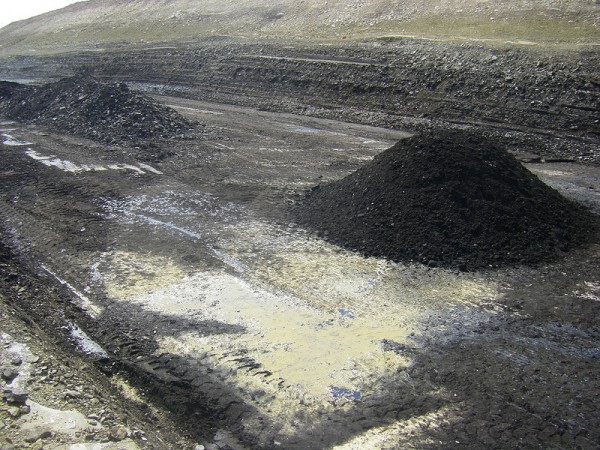Join the Facebook Event & come pack the courtroom!
Utah Supreme Court: Living Rivers v US Oil Sands
FOR IMMEDIATE RELEASE
Contacts:
John Weisheit
Living Rivers & Colorado Riverkeeper
PO Box 466; Moab, UT 84532
Office: 435-259-1063; Mobile: 435-260-2590
john@livingrivers.org
Supreme Court to hear legal challenge over tar sands strip mine on Tuesday, March 4th, 2014.
Landmark case in Utah’s Supreme Court will determine the state’s obligation to protect groundwater
SALT LAKE CITY – The Supreme Court of Utah is scheduled to hear Living Rivers vs Division of Water Quality at 9:00 AM on Tuesday, March 4th. The location of the hearing is: 450 South State Street in Salt Lake City, UT 84114.
The applicant US Oil Sands, based in Alberta, is poised to begin mining operations on 213 acres near PR Spring, Utah. The PR Spring area is perched at the watershed divides of three major rivers: the Colorado River, the White River and the Green River.
PR Spring is a drinking water source in the White River watershed. Water in the area of the proposed mining site flows toward the Green River, potentially entering the water supply for those who depend upon the Colorado River.
John Weisheit, conservation director of Living Rivers says, “I am very worried this water pollution will in-debt both local communities and larger communities downstream with extensive clean-up costs, as well as making people sick.
“This project is a time bomb. The plume of contaminated water will leach into the Colorado, White and Green Rivers long after the mining companies pack-up and disappear.”
Living Rivers is concerned that the untested, experimental mining operation will pollute precious groundwater sources that will one day enter the drinking water supply for Las Vegas, Phoenix, Tucson, Los Angeles, San Diego, and other western communities.
The Division of Water Quality claims the groundwater at the mine site is an insignificant amount of water and harm to water resources will not occur.
Living Rivers understands that wildlife, ranchers, and recreational visitors depend on these freshwater springs, and many are concerned that mining pollution will migrate into drinking and irrigation water for 35 million downstream users of the Colorado River.
US Oil Sands has leased a total of 32,000 acres from the School and Institutional Trust Lands Administration and millions of gallons of accumulated waste water and waste solvents will be absorbed and dispersed into the groundwater systems of the Tavaputs Plateau.
Representing Living Rivers are attorneys Joro Walker and Rob DuBuc of Western Resource Advocates.
Click here to read the brief prepared by Western Resource Advocates.
Click here to visit the administrative record of tar sands mining in eastern Utah.
Attorneys for Division of Water Quality
Bridget K. Romano (Utah Solicitor General)
Paul McConkie (Assistant Attorney General)
Kimberlee Sellers McEwan (Assistant Attorney General)
Attorneys for US Oil Sands Inc.
A. John Davis III (Holland & Hart)
Christopher R. Hogle (Holland & Hart)
HIGHLIGHTS OF THE BRIEF
The threshold issue in this matter is whether the State’s Water Quality Board and the Executive Secretary used a consistent regulatory definition of groundwater to decide that, in the area of US Oil Sand’s proposed strip mining operation for bituminous sand, no groundwater exists above 1,500 to 2,000 feet below the surface. Living Rivers shows that the Executive Secretary did not and, as a result, that the Executive Secretary failed to properly weigh and consider clear record evidence pointing to the presence of groundwater, as defined by the Utah Ground Water Quality Protection regulations (Regulations) and in keeping with the Water Quality Act.
Arguments
1. The Utah Water Quality Act requires the Board to protect from pollution all Waters of the State.
2. For the purposes of groundwater protection, Waters of the State is defined as “all accumulations” of subsurface water.
3. In its Ground Water Quality Protection Regulations, the State’s Water Quality Board has narrowed that definition, stating that groundwater is “subsurface water in the zone of saturation including perched ground water.”
4. Water in a zone of saturation must be equated with a subsurface accumulation of water and the Act must be understood to require the Executive Secretary to protect any accumulation of subsurface water located within a zone of saturation.
Leave a Reply